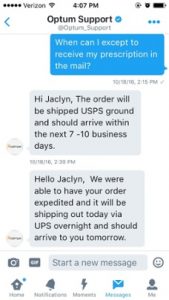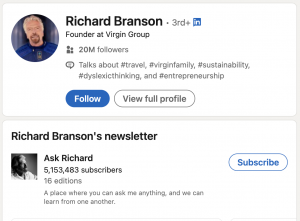How a network of ex-Tesla employees created $10 billion worth of U.S. clean-energy investments
From new batteries to EV chargers to battery recycling, ex-Tesla employees are creating a web of new entries into the clean energy space. Here’s what they say working at Tesla taught them.
BY Adele Peters
At a former steel mill in West Virginia, a recently-completed factory is ramping up production of something new: “iron-air” batteries that can cheaply store renewable energy for as long as 100 hours.
The startup, called Form Energy, is bringing hundreds of new jobs back to a small town that was built around the steel industry. The company’s founder used to work at Tesla. Now he’s one of multiple ex-Tesla employees who are now scaling up new clean tech factories across the country.

“The numbers add up pretty quickly when you look at the amount of manufacturing investment tied to Tesla founders,” says Tom Taylor, senior policy analyst at Atlas Public Policy. The group tracks announcements about new climate tech factories in the U.S. through its Clean Economy Tracker.
They include:
- Redwood Materials, from former Tesla cofounder J.B. Straubel, now has a massive $3.5 billion battery recycling plant in Nevada. The company also has another $3.5 billion plant under construction in South Carolina.
- American Battery Technology Company, a battery recycling company from former Tesla engineer Ryan Melsert, has a $75 to 100 million plant near Reno. The company tells Fast Company it is also building a $600 million refinery in Nevada that will make a battery component.
- Form Energy, launched by former Tesla Energy VP Mateo Jaramillo, built a $760 million battery factory in West Virginia.
- Wallbox, cofounded by former Tesla employees Enric Asunción and Eduard Castañeda, built a $70 million factory to make EV chargers in Texas.
- Sila Nanotechnologies, from former Tesla engineer Gene Berdichevsky, is building a $400 million factory in Washington State to make a key component to improve EV batteries.
- Lucid Motors, from former Tesla VP Peter Rawlinson, has a $300 million EV factory in Arizona, with plans for a $700 million expansion.
In total, the companies are responsible for nearly $10 billion in investments in U.S. manufacturing. They will also likely be responsible for creating more than 10,000 jobs. That’s not even including companies from other ex-Tesla founders who are working with manufacturing partners. Lunar Energy, for example, is working with SK, a South Korean manufacturing company,to make new home batteries at a Georgia factory. And many more are operating outside the U.S. Northvolt, founded by former Tesla supply chain head Peter Carlsson, has multiple multibillion-dollar battery factories in Europe, and another planned in Canada, for instance.

Figuring things out from scratch
Working at Tesla, especially in the beginning, was a crash course in how to scale up manufacturing a new product. “In many ways, Tesla was not looking to recreate templates from other industries for how they did things,” says Form Energy’s Jaramillo. He worked at Tesla from 2009 through 2016, as the company grew from around 300 employees to 30,000. “I was put in a position of having to figure a lot of things out essentially from scratch.”
It was a fundamentally different experience than working at a big company, where you’re reliant on existing structures and systems. “At Tesla, we just really didn’t have that—you’re doing the trapeze without a net,” he says. “There’s the practical learnings that go with leading multiple development cycles in hardware. At least as important, however, is the mindset that you’re required to maintain at Tesla if you stick around for any period of time. Which is: Ambitious things should be tackled, and you might as well tackle them yourself.”
At Tesla, Jaramillo had worked on lithium-ion batteries for home energy storage. But “I always knew the market would not end with lithium-ion,” he says. When he left Tesla, he started exploring other solutions.
Form Energy takes a unique approach to battery design, with tech that essentially stores energy by rusting iron in reverse. It solves a big challenge for renewable energy—how to store it affordably over long periods. (The company has simultaneously discovered a new way to make green steel.) At the West Virginia factory, where production trials are now underway, the first batteries will begin to be delivered to customers by the end of the year.

A passion for hard tech
It’s also true that if you want to work at Tesla, you’re probably more likely to already be the kind of person who wants to start a similar company yourself. “People who intrinsically have a passion and an interest in building hard manufacturing technologies and scaling them are oftentimes drawn to Tesla because in the last couple decades, I think you could make the case that it has been the premier hard technology startup in the U.S.,” says Gene Berdichevsky, founder of Sila Nanotechnologies.
Berdichevsky, who was one of Tesla’s earliest employees, said that he and others “would show up for the mission, the vision, the opportunity to build something special, learn a lot in the process, and then be that much more ready to do it ourselves.” His company makes tech that gives lithium-ion EV batteries a longer range and the ability to charge faster. It can be easily added to existing batteries, so battery makers don’t have to make huge investments in new manufacturing.
Working at Tesla and “seeing what future challenges were going to be” sparked the idea, he says. “I developed a very firm belief that the chemistry of the battery would become the most limiting item to bring down the cost of electrification. And therefore, I wanted to go work on that hard problem.”
Sila’s first factory, in Moses Lake, Washington, is in the final stages of construction; the tech will begin shipping to its customers next year, and it could show up in some vehicles as soon as 2026.

The Tesla effect on investors
When investors consider backing a new company, if a founder came from Tesla, “there are very positive signals from that,” says Katie Rae, CEO and managing partner of Engine Ventures, who led Form Energy’s seed round of funding.
That’s true for founders from other companies, like Google and Facebook. But Tesla has a somewhat unique blend of what Rae calls “extreme entrepreneurialism” and manufacturing atoms, not bits. In total, by one estimate, Tesla alumni have founded 61 companies and raised more than $14.8 billion, working on everything from making green hydrogen to self-driving cars.
That’s not to say that having Tesla on your resume is enough in itself. “In any of these situations, there are a handful of people who are extraordinary and then go on to found new things,” Rae says. “Those are the ones you want to find.”
In Form Energy’s case, the founder had a leadership role at Tesla, running the energy group. He was also able to recruit some “extraordinary people out of Tesla” and other companies to assemble a team, she says. And the technology itself had a clear economic case. “I always call it the CFO test: Would a CFO of an organization say yes to this technology?” she says.

A secondary innovation economy
Since the beginning of 2022, around $138 billion has gone into new battery and EV manufacturing facilities in the U.S., says Taylor. Almost $10 billion of that has gone into companies founded by Tesla alumni. “I think that’s a really large effect from a single company that’s actually not that old in the scheme of things,” he says.
It’s an example of the power of manufacturing domestically, he argues. “I think that there’s this real benefit from an innovation perspective to have manufacturers and clean energy companies in the United States, because you then have this secondary innovation economy that pops up around those companies,” he says.
With some recent rounds of layoffs at Tesla, more startups could be coming. And the current companies from ex-Tesla founders could later spawn more startups via their own employees. “I think we need more hard tech companies,” says Sila’s Berdichevsky. “Hopefully, in 10 or 20 years, you’re writing about the alumni of some of these companies.”

ABOUT THE AUTHOR
Fast Company
(7)







